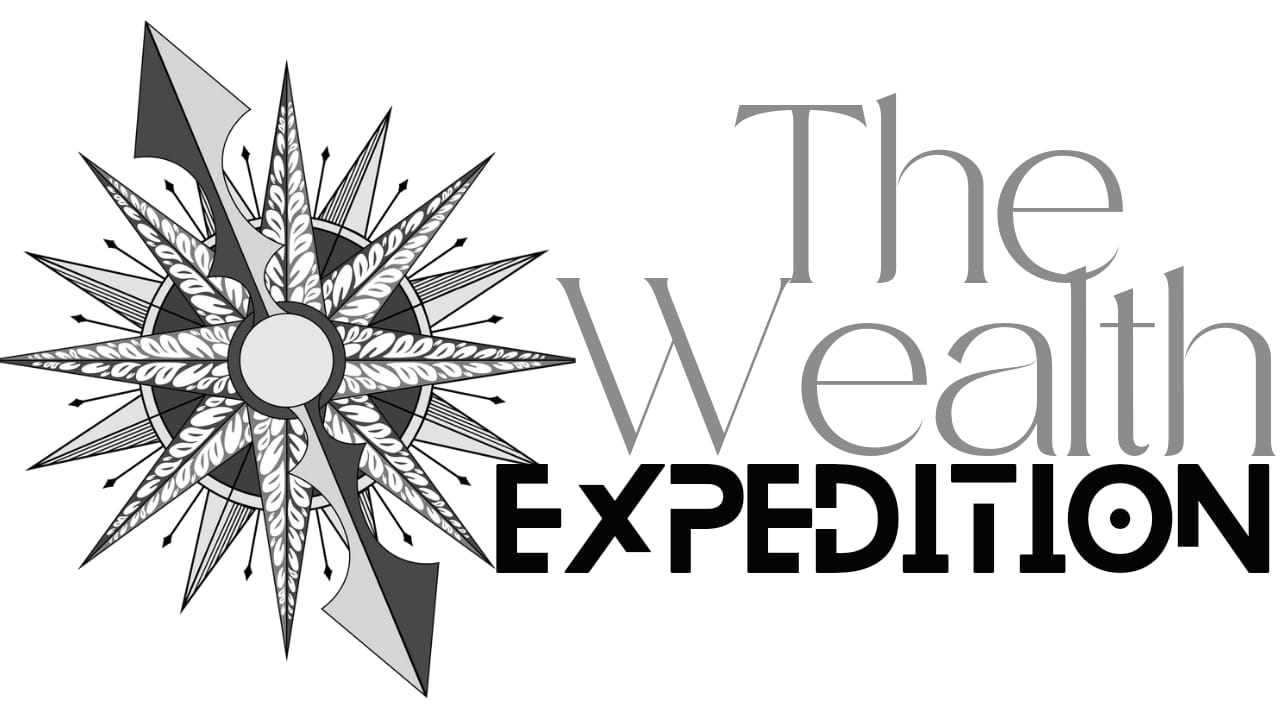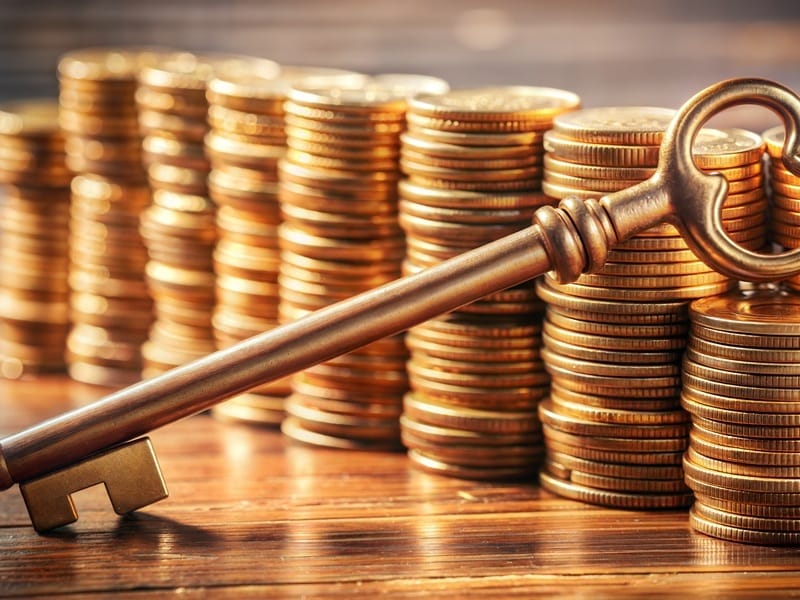- The Wealth Expedition
- Posts
- Can $50,000 Change Your Life?
Can $50,000 Change Your Life?
If I were to do things over, here are three ways I would consider using my first $50,000.

Good morning!
Today we’re going to try something a little different. Normally, I’ve offered three main sections covering economic news, wealth mindset, and a financial tool or strategy.
This week’s newsletter is one single deep dive.
I’d love to know how you like this format. There are two polls at the end: one tells me how you like the format, and the other tells me how you like the content. Your feedback helps me know what you’d like to see in future issues!
Smarter Investing Starts with Smarter News
The Daily Upside helps 1M+ investors cut through the noise with expert insights. Get clear, concise, actually useful financial news. Smarter investing starts in your inbox—subscribe free.

“You want to set a goal that is big enough that, in the process of achieving it, you become someone worth becoming.”
–Jim Rohn

Can $50,000 Change Your Life?
There are two paths which I teach in The Wealth Expedition.
One path is entrepreneurship. Because actively owning a business can yield dramatically higher returns than passively owning stock.
The other path is what I call a personal discretionary fund. This is a bucket of money that is invested, but that an individual can draw from annually to improve their standard of living. That could be for a vacation or holiday, memberships or subscriptions, gifts, hobbies, or anything else.
So if I had to do it all over again, what would I do with my first $50,000?

Path of Entrepreneurship - Starting a Business
Depending on the business, there will be a wide range of what startup costs might look like. An online, tech-based, or physical service-based business with few equipment needs might be typically anywhere between $5k and $40k in the first year.
For businesses requiring inventory, physical locations and/or a broad range of equipment, this could easily surpass that range. But here we’ll use low-cost startup assumptions for illustration.
Before quitting or reducing hours at my day job, though, I would spend time developing a few aspects that are critical to the new business.
$10,000: I would dedicate something between $5,000-$10,000 to some degree of consulting, education and overall coaching on how to start or buy the business I planned to run. Of course, due diligence is important when selecting a coach to avoid overpaying. We want to get the best value for our dollar!
$20,000: I would dedicate something between $10,000-$20,000 to developing interest in whatever good or service I have to offer. If an online business, that might mean building an email list, a social media following, or a YouTube channel by paid promotion. If a local and physical business, that might mean reaching out to potential customers (businesses or individuals) to gauge interest and even offer early bird discounts. If I could offer some service or good immediately (before the full business launch) to gain traction, feedback and loyalty, I would definitely make that part of the early stages.
$20,000: I would dedicate about $10,000-$20,000 for legal setup, licenses, and insurance, along with paying for tools, equipment, SaaS, programs, or anything else necessary to running the bare minimum of the business. Of course, depending on the business, this amount can vary dramatically. A dropshipping store might cost $5,000-$10,000 for setup and initial ads, while a local tutoring service might need $10,000-$20,000 for marketing and certifications.
Remainder: I would place any remaining cash (targeting $5,000-$10,000) in a high-yield savings account for covering unknown future business expenses.
Once I had the education, the interest, and the legal status to begin, only then would I begin the work with the help of a coach or consultant (part of the education).
It’s important to note that building interest and completing education may take the better part of a year to complete, depending on the business model and one’s availability to devote to it. This can delay business income, making it of critical importance that I’ve 1) already budgeted to have a net positive cash flow from my day job to supplement the early stage of the business and 2) I’ve already built and continue to maintain a personal emergency fund of 3–6 months of living expenses.
Path of Entrepreneurship - Buying a Business
On the other hand, I might want to reduce the risk of having no market fit and being one of the 20% of small businesses that fail within the first year, or 50% that fail within five years.
There’s still plenty of risk when buying a business or a franchise, but at the very least, they have a history to show that demand has been there for that product or service. And you have the benefit of assistance from someone who already knows how to run the business.
Small businesses often sell anywhere from 20x to 40x or more of their average monthly earnings. Online businesses like e-commerce tend to be on the lower end of that range, content online businesses and small local businesses on the upper end of that range, and well-established franchises or other businesses beyond the upper end.
This really depends on several factors including brand awareness, revenue diversification, and required owner involvement.
I like to use 30-40x as a rule of thumb. So if I were to buy a business with just $50,000, I would do one of two things:
If I were confident in my ability to run the business (I’m very familiar with the industry by experience and education), I might do an owner-financed purchase where I put $40,000 down with the promise to pay the remainder over 3-5 years. With this option, I might be able to purchase a business worth $50,000-$70,000. The risk here is that this reduces take-home pay during the payoff period and makes it even more important that I have additional cash reserves available for an emergency.
On the slightly less risky side, without involving debt, I might just buy the business outright, spending around $40,000 on the business and reserving the other $10,000 for emergencies and any needed coaching/consulting for insight into growing the business and earning potential.
Of course, it’s of critical importance to review the business’s financials, customer base, and liabilities with an accountant or advisor to avoid overpaying.
Assuming a purchase price of 30x monthly earnings, these businesses might initially yield something like $1,300/month before taxes.
Keep in mind that, in this income range, 20–30% of business income could easily go toward paying taxes. Obviously, these numbers aren’t going to make me rich overnight.
But they do two things:
Simply assuming things continue uniformly for years to come (no growth and a sale of the business at the end), that internal rate of return (IRR) could possibly range from 10%-25%, depending on operating costs, taxes, market volatility and reinvestment of earnings. Just modest success could yield higher returns than I could expect on average in the stock market.
It opens to the door to far greater possibilities, including the opportunity to scale while shaping my career around my personal values and vision.
It’s important to clarify that business ownership is riskier than a well-diversified stock portfolio, because it is highly concentrated (single business/sector risk) and it depends on you to drive its success.
Businesses are illiquid, whereas stocks/funds are liquid and can usually be sold in a day. For the IRR calculated above, I assume the business is sold at the end, which isn’t a given. Illiquidity due to lack of demand is a risk.
But for the added risk, of course, there is also far higher potential for success if things go well.
Discretionary Fund
Entrepreneurship isn’t for everyone. The world needs business owners and it needs employees who love what they do. If you love your job, or have a dream job in mind that you’re aiming for, then you might build a personal discretionary fund instead of a business.
A taxable account (non-retirement) with $50,000 invested might assumedly earn something in the range of 5%-12% annually on average. This assumes past markets are similar to future markets (which isn’t guaranteed) and that the money is invested with the proper amounts of risk in relation to time horizon and risk tolerance.
Let’s assume an average of 7% for illustration and 15% for the taxes (in some cases, 20% tax might apply for high earners).
Plug $50,000 into a financial calculator like this:
PV (present value) = -50,000
FV (future value) = 0
I/Y (growth per period) = 0.583 (7% divided by 12 months)
N (number of periods) = 120 (for ten years measured in months)
Then hit CPT (compute) and PMT (payment) = $580.54
$580.54 x (1 - 15% taxes) = $493.46
This tells us that with $50,000, you could plan to improve your lifestyle by an average of about $493/month or just under $6,000 per year for about 10 years, based on this oversimplified calculation. In reality, it probably ranges closer to 5-10 years, depending on market conditions and inflation.
Why are we interested in only 5-10 years? Because if you’re serious about growing wealth, then 5-10 years gives you time to boost earned income through continued education and career planning, with results of course varying by industry and effort.
If you took only half of this number, $3,000 net after tax annually, then that $50,000 could potentially last 15 years or more, depending on markets and your risk management tactics. For example, if markets took a significant drop in the early years, this might cause the $50,000 to run out sooner. If inflation were higher than expected, this could also cause it to deplete sooner.
Using a diversified portfolio and reducing/pausing withdrawals during market downturns helps preserve principal.
A 4% withdrawal rate of $2,000 (or $1,700 after tax assuming 15%) is more likely to last 20-30 years or longer when adjusted for inflation.
Could $3,000-$6,000 extra per year pay for or supplement a nice vacation? Could it allow you extra unpaid days off work? Maybe it could buy several nice dates or dinners with your special someone. Maybe let it supplement your mortgage or rent payments, paying extra on the principal if it’s a mortgage. Or just let it compound for the next big purchase of a car or down payment on a house.
In essence, if you love your job, you can give yourself a raise along with greater flexibility by using this additional income stream through smart investing.
So How Does Someone Build To $50,000?
In next week’s newsletter, I’ll discuss tactics I believe can make this a reality in your life, kickstarting your expedition to a whole new level.
It’s all about opening doors of opportunity. Riches don't happen overnight. But without regular progress and a change of mentality, they most likely won't happen at all. Walking through the door, even though it means making mistakes amidst uncertainty, is a major milestone to changing everything. And $50,000 just might open that door.
Until next week, I hope this offers food for thought which encourages you to dream about future possibilities that are well within your reach to achieve.
See you on the next go around!
Daniel

HERE’S HOW I CAN HELP
Launch Your Personal Wealth Expedition!
Ready to take control of your financial destiny?
Here are the two foundational courses which will set you on course to radically transform the way you live and work.

Budget, Build, Bridge: The Roadmap to Financial Independence
This course will lead you step-by-step toward developing your escape plan into a life of comprehensive wealth: time, flexibility, purpose and money.
Each lesson builds upon the last, covering these main topics:
Master high-impact budgeting techniques to create a surplus today.
Develop a plan to become debt-free in record time.
Raise your salary this year.
Use tax strategy to fast-track your goals.
Bridge your way to entrepreneurship.

Advanced Investing for Financial Freedom
Whether you're new to investing or a seasoned expert, this course is designed to make anyone a master of what I believe to be the most important investing concepts.
Here's what you'll learn in this course.
The foundational concepts for analyzing the risk and performance of mutual funds and ETFs.
How your goals affect the allocation of your investment portfolio.
How to fine tune the risk factors in your portfolio to weight the odds of success in your favor.
How to identify stages of the market cycle and build your portfolio around it.
How, when and why to hedge against downside risk.
How this all ties together as one comprehensive wealth expedition from ground zero to financial independence.
With investing, it often takes an understanding of just a handful of concepts to make all the difference in your ability to make tremendous wealth over time.
My goal with this course is to offer you what I see as the most important concepts to successful investing, setting you on course to achieve your dream life well in advance of retirement age using simple but powerful habits of finance.

How did you like this deep-dive format? |
How did you like today's newsletter?I'm always looking for ways to offer greater value to fellow explorers. Your feedback helps set the direction for future content! |

I’d love to hear from you. Let me know what you’d like to see in upcoming newsletters, articles, or a digital course at Contact Us - The Wealth Expedition.